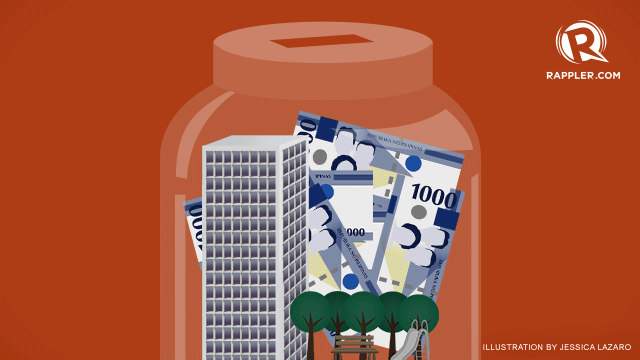SUMMARY
This is AI generated summarization, which may have errors. For context, always refer to the full article.

MANILA, Philippines – If there’s one thing that the wealthy has learned from the global financial crisis, it is to diversify and manage their risks. They’ve turned to real estate as a safe haven for their wealth.
Among markets, the Philippines has become one of the most attractive, largely due to its stellar growth performance. Despite a string of disasters, the Philippine economy grew 7.2% in 2013, making it the fastest growing in the region, next only to China.
Property consultancy firm Colliers International reported that luxury condominium sales in the Philippines more than doubled over the last two years, driven by both overseas and local investments.
According to Colliers, overseas investments in premium properties are divided into several waves: foreign investors buying properties because they have business interests here, investors buying for permanent residency outside their native countries, and wealthy Filipinos working abroad buying for their families.
Locally, high net worth investors looking to earn windfalls and end-users also fuel demand.
While some purchase these properties as “trophy assets,” others “realize that the yields are attractive and the volatility of returns much lower than other investment classes,” said Julius Guevara, director and head of research and consultancy at Colliers.
High condo sales
Guevara said luxury condominium sales in the country priced at more than P7 million surged over 300% to 3,900 units in 2013 from 1,300 units in 2011.
He said demand for local premium properties continues to rise as the economy expands. Locally, this is demonstrated by the robust performance of the services sector, which is largely accounted for by the BPO industry. Due to low labor costs and English proficiency of the workforce, more outsourcing companies are choosing to locate their offices in the Philippines. This surge, in turn, brings in more expats looking to buy or rent premium properties near their workplace, noted Romeo Arahan, one of Colliers’ research analysts.
Foreign investors banking on the Philippines’ prospects are also buying properties here.
Under the law, foreigners are not allowed to own private land in the Philippines but they may own condominium units, provided that the title of the land where the condominium stands is owned by a Filipino corporation, and not more than 40% of the units are owned by foreigners.
Arahan said these foreign investors are mostly from Asia, mainly Hong Kong, Singapore and China.
Guevara said particularly, there was a boost in inquiries from Singaporean and Hong Kong buyers, “who had cooling measures enacted in their own housing markets so that they are now looking for areas outside of their home countries to invest in.”
Jan Custodio, head of CBRE Global Research and Consultancy, also gave an explanation: “The main motivation for these foreign investors is that the Philippine property market is a worthwhile investment given the acquisition costs of properties here in the Philippines is much lower compared to areas such as Singapore and Hong Kong.”
How they earn
Premium property buyers earn from their purchases in two ways: leasing and what analysts call “flipping” or buying low, selling high. However, Guevarra said more investors are into leasing.
“We have not seen much ‘flipping’ for these properties, most likely because the buyers hang on to these properties due to rental yield potential,” he explained.
Guevara said the Philippines currently has the highest gross rental return in the region for premium properties. “The net effective rental yield and capital appreciation is about 10-11%.”
A Colliers report said premium 3-bedroom rental rates in Makati rose 0.4% in the fourth quarter of 2013 from the previous quarter. This put monthly rent for a 250-square meter unit at P201,250. In Fort Bonifacio, rental rates went up 1.7% quarter on quarter, putting the monthly rent for a 250-square meter unit at P202,000.
Those in the buy and sell business acquire properties at lower prices during pre-selling and sell them for profit later into that stage or when the project has been completed.
According to Arahan, premium properties cost between P150,000 to P250,000 per square meter so, say, a 60-square meter property would cost P9 million at the very least.
Guevara said some projects may go as high as P168 million like the Two Roxas Triangle in Makati. Another example would be the Garden Towers, also located in Makati, where units range from P 10million to P220 million.
Tom Mirasol, Ayala Land Head of Sales and Marketing for the Residential Business Group, said, “If a person is making a property investment, it’s always wise to buy the best that you can afford.”
The prices of premium properties are primarily driven by location. Other determining factors are the size, type of property (a condominium or a lot in a high-end subdivision) age and upkeep costs. – Rappler.com
Add a comment
How does this make you feel?
There are no comments yet. Add your comment to start the conversation.